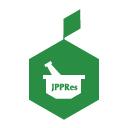Article,
In vitro release of dibucaine hydrochloride from chitosan semisolid vehicles: emulsion and hydrophilic gels
Journal of Pharmacy & Pharmacognosy Research, 5 (2): 96-105 (March 2017)
Abstract
Context: Chitosan has received attention as a functional, sustainably renewable, nontoxic and biodegradable biopolymer for pharmaceutical applications.
Aims: To evaluate the release of dibucaine hydrochloride from semisolid vehicles of oil/aqueous type emulsion and aqueous gels, stabilized by using chitosan (CH) or chitosan acetate (CHAc).
Methods: Emulsions were developed by varying the emulsifying agent: polysorbate 80, CH or CHAc and by combining CH with polysorbate 80 or CHAc with polysorbate 80. The hydroxypropylmethyl cellulose F4M was added as a stabilizing agent in gel formulations. The release rates of model drug from semisolid vehicles were measured by using a dialysis sac. Drug release was also quantified by using a validated UV-VIS spectrophotometric method.
Results: The pH values showed minimal changes for emulsion and gel formulations. The drug is a cationic salt, and it is not able to bind polymer cations by electrostatic repulsion. The rheological property of the vehicle type emulsion was adjusted to plastic and pseudo-plastic fluid to the gels. The drug release was independent of the viscosity of vehicles. Dibucaine release from both types of formulation was found to follow a square-root-of-time kinetic model, but a higher rate of release was obtained from gel formulations.
Conclusions: It was shown that chitosan was adsorbed to the surface of polysorbate 80-coated droplets, and that the electrostatic attraction between the non-ionic surfactant and the drug retarded its release from a semisolid system. The multilayer emulsions showed more influence of the release of drug than CH or CHAc single layer emulsion.
